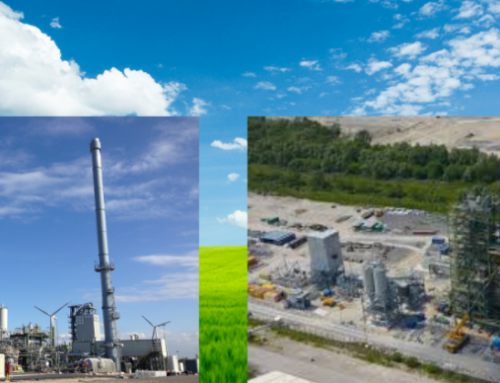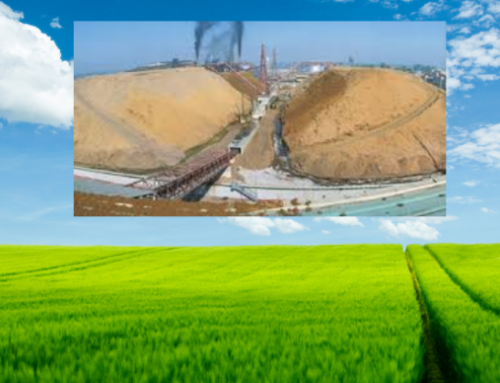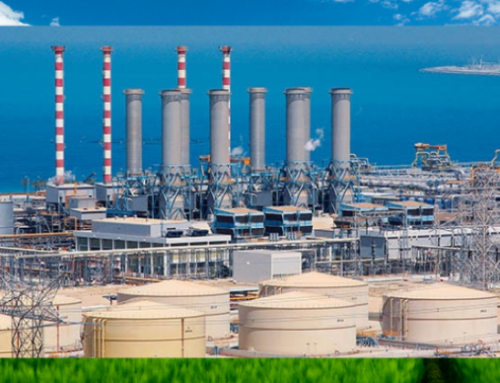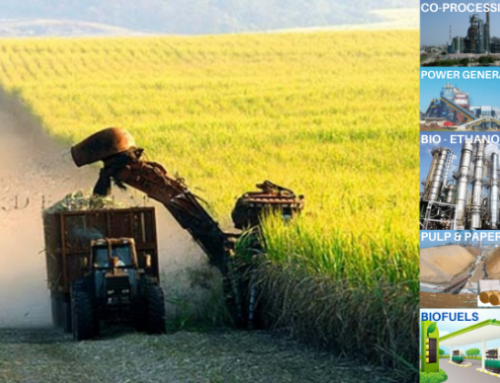Ivo Fouto (ivofouto@cenerbio.com) – June 23, 2020
Previous/Introductory article: https://cenerbio.com/green-and-sustainable-economic-recovery-after-covid-19-pandemic-alternatives-for-brazil-and-tropical-regions
2. Distributed Electric Power Generation (Bioenergy) + Ethanol (Biofuel) Production:
As a continental-sized country, Brazil is reaching maximum capacity to generate renewable hydropower. Its potential new sources are far from consumption centers, requiring large investments in transmission lines. Additionally, reservoirs for these potential new sources are generally located in flat regions, with a huge flooded area requirement for reservoirs.
Also, as has been widely demonstrated, the world is currently experiencing the impacts of climate change, which have been causing several adverse and increasingly intense effects on the planet.
More specifically, Brazil is suffering from the extremes of punctual and large rain volumes, as well as long and intense periods of drought which, among other problems, has strongly affected the levels and the recovery of existing hydropower plants reservoirs.
Another problem is structural in Brazil. At the extremes of the SIN (Brazilian National Integrated System), mainly in the North of the country, the generation or back-up of the system is carried out by thermal plants, generally using diesel as fuel.
This diesel is transported from refineries in the Southeast region at an unviable expensive cost, overloading Brazil´s finances with subsidies and impacting all consumers with high prices for electricity.
It is necessary to evaluate and relativize other renewable energies sources as Wind and Solar, not only due to their high cost of implementation but also because of their operational limitations and restrictions, as they are intermittent sources of energy, lacking sustainable and competitive storage systems and needing Smart Grids for their effective operation, and associated challenges, which are still at an early stage of development in Brazil. Also, it is required integration with sources of steady energy (hydro, thermal, or biomass) for back-up and complementing the electricity supply.
It has already been demonstrated that renewable energy from biomass, for example from Sugarcane Bagasse, provides steady and continuous energy during the winter period (agricultural harvest season), also helping to preserve the reservoirs levels in this dryer period.
Unfortunately, this abundant source of Bagasse-based bioenergy generation is limited to 200 days per year of harvest (Sucrose) and by the impossibility of transporting and storing biomass (low load and energy density) to operate electricity generation outside the harvest season.
Despite this crop-related constraint, Sugarcane Bagasse power generation in 2018 provided 5% (21.5 TWh or the equivalent to supply 11.4 million homes/year) of total electricity consumption in Brazil, with hundreds of plants generating and selling renewable electric power (Bioenergy) to the SIN.
This source of biomass from Sugarcane is the fourth largest source of energy in the country (11,410 MW of installed capacity) and represents 77% of the total biomass generation in Brazil, which in 2018 prevented the emission of 6.4 million tonnes [1 tonne (metric ton) = 1.10231 ton = 2,204.6 pounds] of CO2 into the atmosphere.
As Energy Cane is not limited by the Sucrose maturation curve as the main source of raw material but is rather focused on the production of Lignocellulosic biomass and fermentable sugars, it can operate all year round, with minimal limitations. Energy Cane produces, in addition to Electric Energy, Ethanol as a fuel for regional consumption.
In new specific projects using Energy Cane, direct jobs are created for the operation of these industrial plants and for agricultural activities, including small and medium agricultural producers. Energy Cane’s agricultural aptitude is evidenced in already executed agricultural zoning.
The overlap of Energy Cane´s aptitude with the SIN´s grid indicates the possibility and viability of sustainable development for several projects of distributed Electricity + Ethanol, integrated to the SIN, in the vast majority of the country, with the use of agricultural and industrial equipment manufactured in Brazil, with established local technology.
Even regions of high restriction and low development, such as Vale do Jequitinhonha in the state of Minas Gerais, can be benefited from this type of regional development, with the implementation of interconnected projects of Distributed Power + Ethanol.
States like Roraima are in an even more critical situation, including national security concerns, as they are not connected to the SIN and consequently have a major dependence on supply from abroad, in this case, from Venezuela.
2.1 Highlights: Distributed Electric Power Generation (Bioenergy) + Ethanol Production:
Integration with existing Sugar Mills in Brazil: As Energy Cane has a higher amount of fiber (Lignocellulosic biomass) per tonne of Energy Cane, the crushing mills of existing plants generally need mechanical adjustments in the chipper and first set of the crusher mill for processing.
The juice generated in the crushing process contains a low amount of Sucrose and therefore could not produce sugar (food grade, obtained by crystallizing Sucrose) competitively. But as all the sugars generated by Energy Cane are fermentable, Ethanol production is maintained, and the production per planted area will be increased.
In current plants, this industrial balance (Capex; Process; Mass and Energy) of Sugar + Ethanol + Power production is specifically designed and balanced for Sugarcane and therefore the use of Energy Cane in industrial processing, directly or even blended, is relatively complex, requiring adjustments and processing modifications.
Some industrial groups in Brazil are starting to reopen closed plants, modified and balanced to process 100% of Energy Cane, optimized exclusively for the production of Electric Energy (Bioenergy) and Ethanol during 11 months/year, where soil conditions and rainfall allow such industrial processing, harvesting, and maintenance operations, during this extended crop period.
This is an alternative that could be widely used in Brazil for the reopening of several deactivated Sugar-mills, but these units would be exclusively dedicated to the production of Electric Power and Ethanol, using Energy Cane as a raw material resource.
Another alternative that could be evaluated would be disassembling, readjusting, and transferring paralyzed plants to more distant regions in Brazil, interconnecting to the SIN, in regions with a shortage of Electric Power and Ethanol.
Despite the current Brazilian status, in the world there are many positive and growing signs of sustainability commitments, for instance, a strong uptrend surging in large and influential global corporations.
2.1.1 Ethanol:
Sugarcane Ethanol is classified as Advanced Biofuel (D5) by the EPA (United States Environmental Protection Agency), while Corn Ethanol has a lower classification, of Renewable Fuel (D6), as defined by the Life Cycle Assessment (LCA) of the EPA.
In Brazil, Renovabio is a program, included in the National Biofuel Policy, which establishes annual national decarbonization goals for the fuel sector, to encourage an increase production and participation of biofuels in the road transport energy matrix.
This program will certify and thus reward each producer, in a value inversely proportional to that of the carbon intensity of the biofuel produced, in comparison to its fossil fuel substitute. Energy Cane’s high efficiency will be another competitive factor and potential financial benefit from Renovabio, in the projects where such raw material will be used.
Besides, Ethanol is a vast source of Hydrogen, easy and safe to store and transport.
Even so, there has been scrapping and dismantling of the national Sugar-& Energy sector in recent years, which has taken Brazil from an expressive and privileged position as a major exporter of Ethanol (Biofuel) to a shameful trend position of importer of this product, mainly produced from subsidized corn in the USA.
2.1.2 Biogas:
Biogas is another alternative for generating additional energy, derived from the production of Ethanol.
The Vinasse generated in the fermentation process of Ethanol production is used in a bio-digestion route which produces Biogas, being Methane (CH4) its main component.
The residues from this bio-digestion process, mainly Potassium, are returned to the field and used as a complement to Fertilization in the agricultural production of Energy Cane.
2.1.3 Economics:
The financial evaluation of a project fluctuates according to several factors, such as the project location (Capex & Opex) and the respective commercialization Electricity and Ethanol values.
To illustrate some of these variables, the following figure considers a scenario in Brazil, in a basic project size that would produce, in 12 months, 356,400 MW of Electric Power and 72.2 million liters of Hydrous Ethanol.
Also, the project should be installed in less than 10 km from the transmission network (SIN), to prevent high investments in the interconnection system.
The value of Energy and Ethanol may vary widely, depending on the commercialization method (spot or long term) and distance/availability from other sources, in special Ethanol.
In any way, the basic Payback for this type of project is between 3 – 6 years, depending on the variables above, without any subsidy in investment and in commercialization prices of the products.
Considering the defined and well known industrial processing, the key economic factor for its success is in the biomass supply chain, with an associated low cost, homogeneity, abundance, and availability, in a sustainable and competitive manner.
Considering the various variables involved, it is evident the need for a detailed and in-depth technical/financial study for an adequate investment decision making.
Next topic (June 30, 2020):
3. Production of Pyrolysis Oil + Ethanol – Co-processing in Petroleum Refineries;
Disclaimer:
This presentation is being delivered by Cenerbio, regarding existing assets, technologies, and projects under negotiation.
The information contained on this presentation is not intended to and does not constitute an offer, solicitation, inducement, invitation or commitment to purchase, subscribe to, provide or sell any securities, service or product, or to provide any recommendations on which a party should rely for financial, securities, investment or other advice or to take any decision based on such information.
This presentation does not purport to contain all of the information that may be required to evaluate all of the factors which would be relevant to a recipient considering entering into any transaction, and any recipient hereof should conduct its own investigation and further analysis. The recipient must conduct its own complete due diligence at its sole responsibility.














Leave A Comment